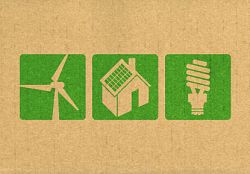

Wind, solar and other renewable power capacity now produce 22% of the world’s electricity. This was reported by the International Energy Agency (IEA) on 28 August.
It is believed this has been helped by the large sums of up to £150 billion invested in green generating systems throughout 2013. This growth is not expected to continue as politicians become nervous about costs.
The executive director of the IEA, Maria van der Hoeven has urged that Governments should continue with their success. "Renewables are a necessary part of energy security. However, just when they are becoming a cost-competitive option in an increasing number of cases, policy and regulatory uncertainty is rising in some key markets. This stems from concerns about the costs of deploying renewables."
The IEA’s third annual Medium-Term Renewable Energy Market Report has suggested that green technologies could be producing 26% of the world’s electricity by 2020.
The current growth of new wind farms and solar arrays is extraordinary but it is not enough to meet climate change targets according to the IEA.
The deputy chief executive of the European Wind Energy Association, Justin Wilkes said: "The IEA report hits the nail on the head when it comes to ambitious national targets for 2030. Not only is a 27% target too low but it doesn't oblige member states to follow through. Europe's heads of state need to agree in October on a binding 30% renewables target if real progress is going to be made to improve Europe's energy security, competitiveness and climate objectives."
The IEA claim that in places such as Brazil, Chile and South Africa onshore wind power is already preferred over coal or gas fossil fuel plants.
Onshore power is still facing opposition from some in the Conservative party and its high costs remain an issue. The industry body, Energy UK, has released new figures that show wind power provided around 4% of Britain’s power generation in July. This is a minor amount in comparison with 42% for gas, 24% for nuclear and 17% for coal.